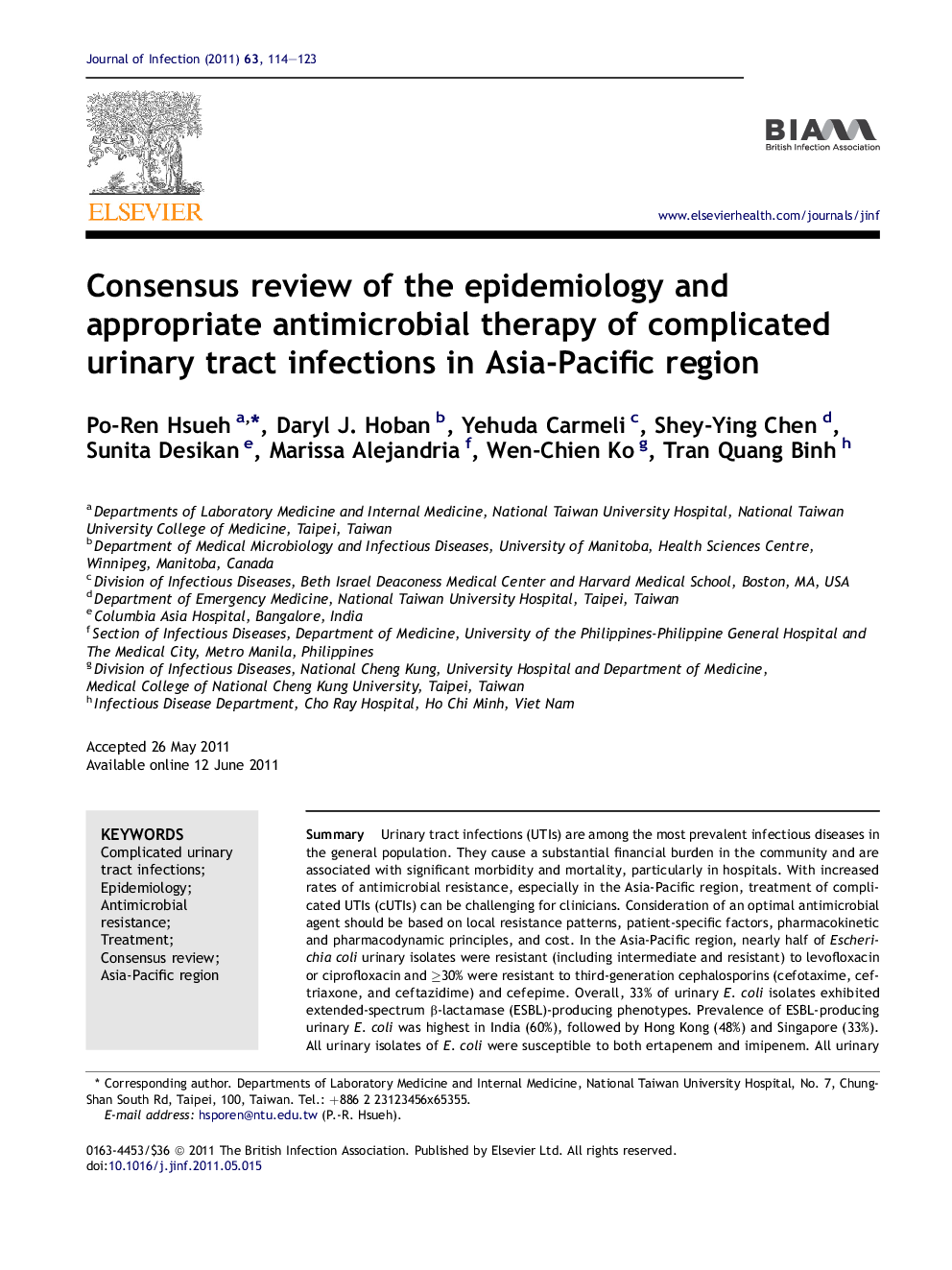| کد مقاله | کد نشریه | سال انتشار | مقاله انگلیسی | نسخه تمام متن |
|---|---|---|---|---|
| 3375256 | 1219667 | 2011 | 10 صفحه PDF | دانلود رایگان |

SummaryUrinary tract infections (UTIs) are among the most prevalent infectious diseases in the general population. They cause a substantial financial burden in the community and are associated with significant morbidity and mortality, particularly in hospitals. With increased rates of antimicrobial resistance, especially in the Asia-Pacific region, treatment of complicated UTIs (cUTIs) can be challenging for clinicians. Consideration of an optimal antimicrobial agent should be based on local resistance patterns, patient-specific factors, pharmacokinetic and pharmacodynamic principles, and cost. In the Asia-Pacific region, nearly half of Escherichia coli urinary isolates were resistant (including intermediate and resistant) to levofloxacin or ciprofloxacin and ≥30% were resistant to third-generation cephalosporins (cefotaxime, ceftriaxone, and ceftazidime) and cefepime. Overall, 33% of urinary E. coli isolates exhibited extended-spectrum β-lactamase (ESBL)-producing phenotypes. Prevalence of ESBL-producing urinary E. coli was highest in India (60%), followed by Hong Kong (48%) and Singapore (33%). All urinary isolates of E. coli were susceptible to both ertapenem and imipenem. All urinary isolates of Klebsiella pneumoniae were susceptible to imipenem and 4% of them were resistant to ertapenem. Care should be exercised when using trimethoprim-sulfamethoxazole (TMP-SMX), fluoroquinolones, and cephalosporins for the empirical treatment of UTIs, particularly cUTI among moderately to severely ill patients. Empiric antimicrobial treatment for serious cUTIs in which risk factors for resistant organisms exist should include broad-spectrum antibiotics such as carbapenems (ertapenem, imipenem, meropenem, and doripenem) and piperacillin–tazobactam. Aminoglycosides, tigecycline, and polymyxins (colistin or polymyxin B) can be used for the treatment of multidrug-resistant organisms or serious cUTIs when first-line options are deemed inappropriate or patients fail therapy. Because of considerable variability in different countries, local epidemiological data is critical in the effective management of UTIs in the Asia-Pacific region.
► Etiology of complicated urinary tract infection.
► Local antimicrobial resistance patterns among commonly encountered uropathogens.
► Pharmacokinetic and pharmacodynamic principles of antibiotic agents for urinary tract infection.
Journal: Journal of Infection - Volume 63, Issue 2, August 2011, Pages 114–123